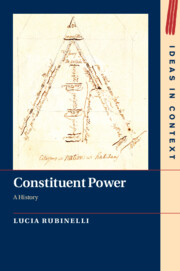Book contents
- Constituent Power
- Ideas in Context
- Constituent Power
- Copyright page
- Dedication
- Contents
- Acknowledgements
- Introduction
- Chapter 1 Sieyès and the French Revolution
- Chapter 2 Constitutional Politics in Nineteenth-Century France
- Chapter 3 The Weimar Republic
- Chapter 4 Constitutional Politics in Post–World War II Europe
- Chapter 5 Arendt and the French Revolution
- Conclusion
- Bibliography
- Index
- Ideas In Context
Chapter 4 - Constitutional Politics in Post–World War II Europe
Published online by Cambridge University Press: 28 April 2020
- Constituent Power
- Ideas in Context
- Constituent Power
- Copyright page
- Dedication
- Contents
- Acknowledgements
- Introduction
- Chapter 1 Sieyès and the French Revolution
- Chapter 2 Constitutional Politics in Nineteenth-Century France
- Chapter 3 The Weimar Republic
- Chapter 4 Constitutional Politics in Post–World War II Europe
- Chapter 5 Arendt and the French Revolution
- Conclusion
- Bibliography
- Index
- Ideas In Context
Summary
After World War II, the language of constituent power was taken up by constitutionalists Constantino Mortati, Georges Vedel and Ernst-Wolfgang Böckenförde to advocate for popular participation in government. They accused contemporary positivist theories of sovereignty of downplaying the principle of popular power in favour of a purely legal approach to the study of legislation. This, they claimed, had the effect of undermining popular participation in politics and needed to be contrasted by adopting a different approach to the study of the state and its foundations. The language of constituent power offered precisely that, as it brought the role of the people back at the centre of constitutional theory. It indeed indicated the power of the people to establish the fundamental ‘political ideal’ at the origins of the legal political system. This power would not disappear once the constitution entered into force but would remain present alongside the ordinary working of the constitutional system. In addition, Böckenförde, Mortati and Vedel aimed to limit the scope of representation and favoured instances of direct exercise of power by the people instead. They thus promoted practices of direct or semi-direct democracy, such as referenda and constitutional revisions, decentralised and federal structures of power.
Keywords
- Type
- Chapter
- Information
- Constituent PowerA History, pp. 141 - 175Publisher: Cambridge University PressPrint publication year: 2020

